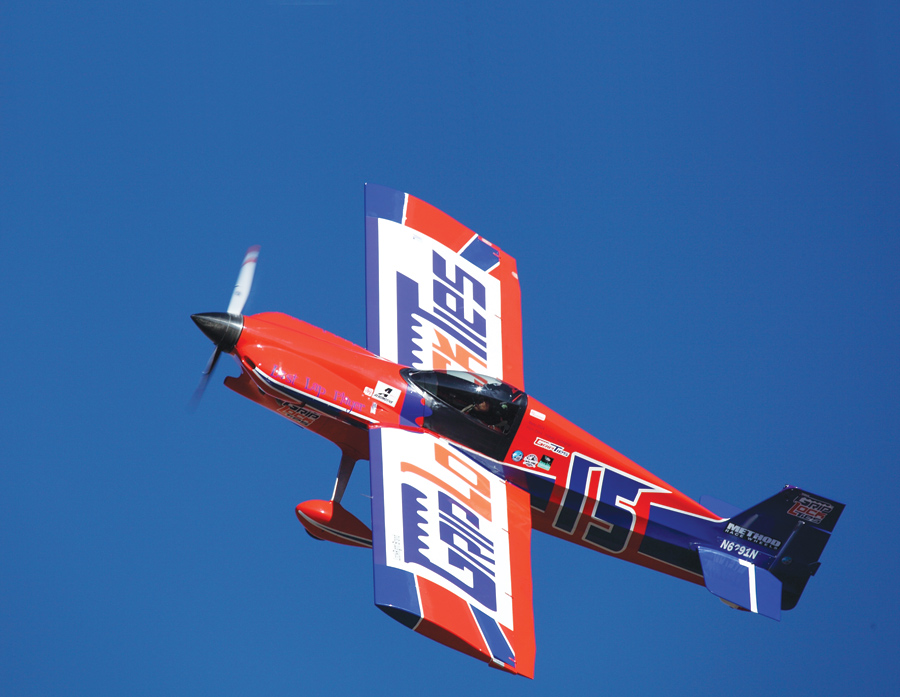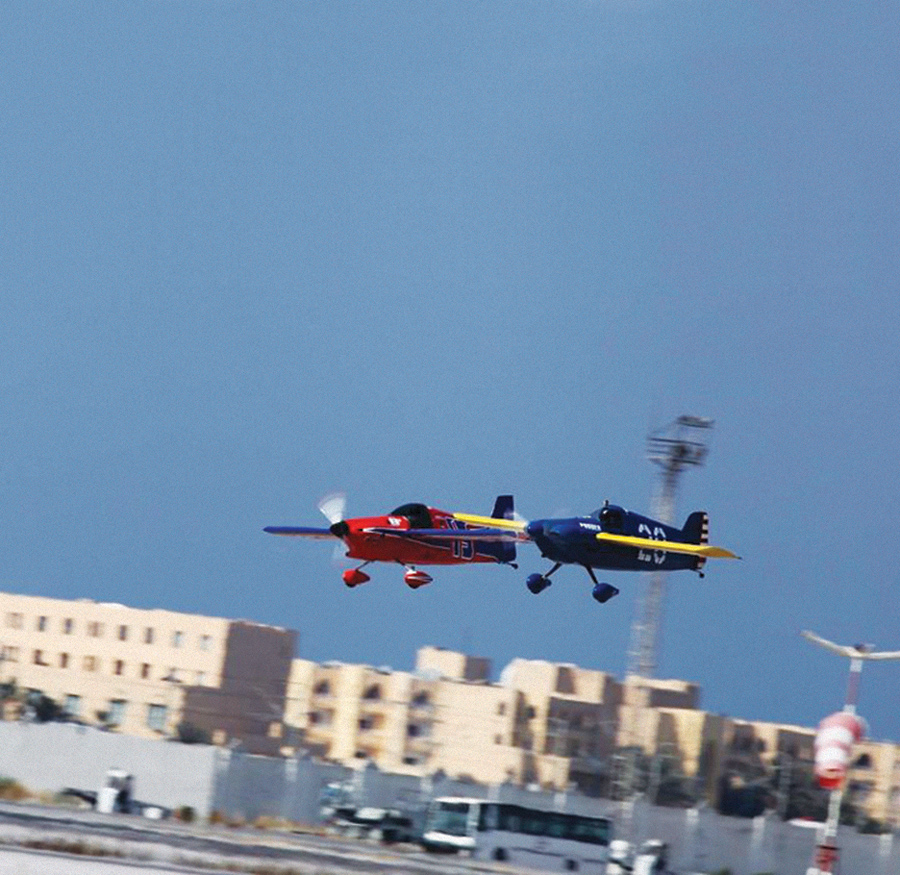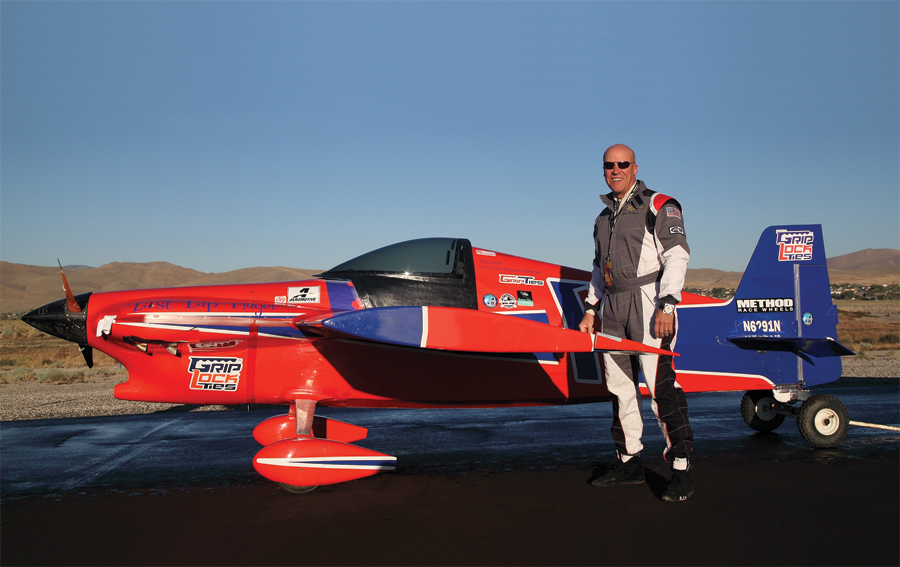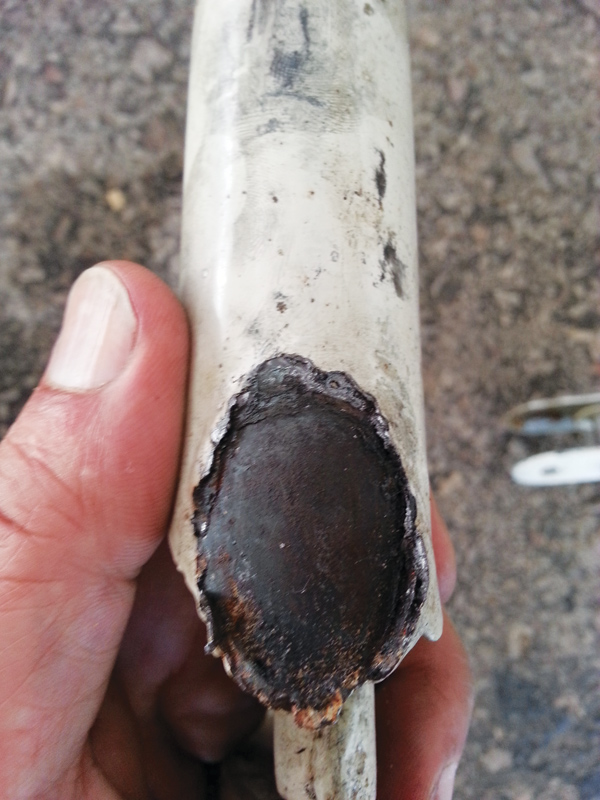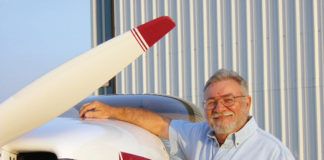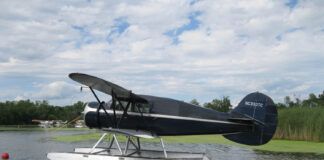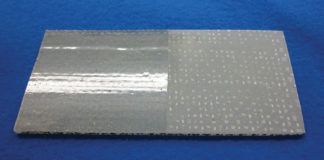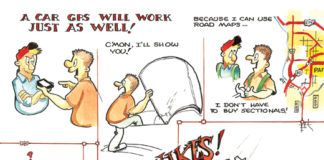I’m not sure quite how to start. It’s not really a “there I was” story, but it does have elements of that. Maybe it’s more of a guardian angel tale. Maybe a close call and how did it happen? Let’s go with that. While racing Formula 1 aircraft in the AirRace 1 series in Tunisia, I had a really, really scary thing happen. I’m tickled to be able to talk about it. The info about this is obviously all over the Formula 1 community. They’ve asked me to spread the word, and the incident has already led to one racer finding a flight control deficiency that might otherwise have been missed. Maybe someone else will get something from this, too.
I’ll back up. I’ve been fortunate enough to be able to fly for a living pretty much my entire life. My flying started when I jumped off a roof on a really windy day with a sheet tied to my ankles and hands. That didn’t work too well (I was young). Then in June 1972, Popular Mechanics ran a big story on hippies in California building and flying hang gliders; I had to be about the only kid in Jersey dumb enough to try it. That didn’t work too well, either (I was young).
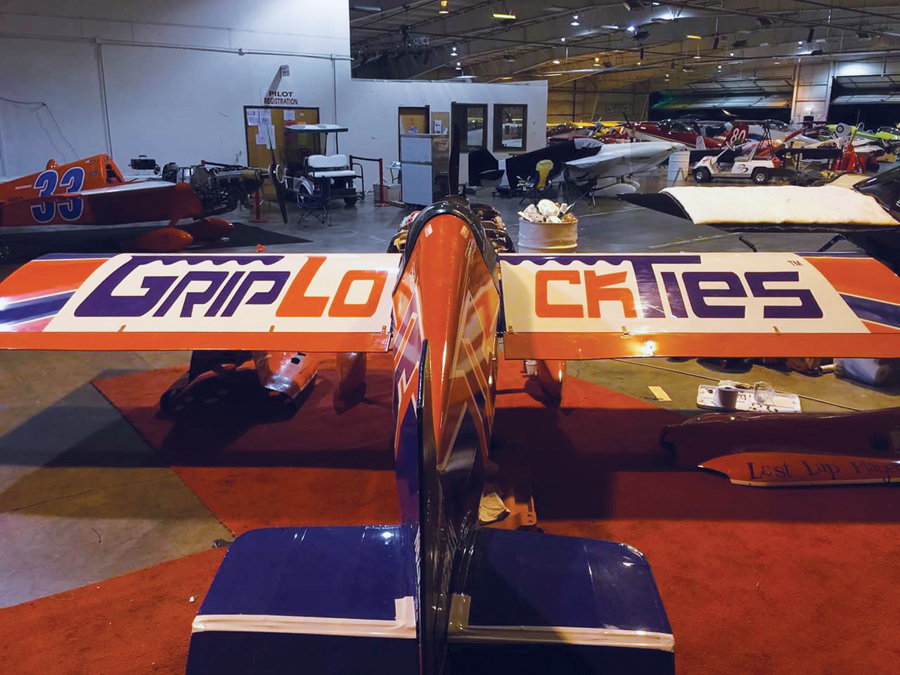
Last Lap Player in the pit hangar at Reno. Catching small problems here can prevent big problems from happening during a race.
I did a lot better with airplanes—got my private at 18, went to Florida Tech, earned more ratings, taught flying, and flew jumpers on weekends till graduation. I joined the Marines, got to be in one of the last flight school classes to fly the T-28B, then jets in the T-2C and TA-4J. After carrier quals and earning my wings, I flew the mighty OV-10A/D Bronco until I left Marine Corps active duty.
Next was drug interdiction aviating for U.S. Customs, follewed by a transfer to the Air Guard, where I flew the C-26B, EC-130E, and then a “light twin” for a provisional special ops squadron out of Hurlburt Field. Along the way, I flew some contract post maintenance test work and a couple of contract fighters—ended up with over 120 combat flying missions and some really good friends and memories. I’m retired and fly for a major airline now. And along the way, I met and married the most patient woman in the world.
Light aircraft flying has always been a passion. I fly hang gliders, paragliders, kitesurf, and skydive, but Experimental aviation? That really gets my motor running. I’ve owned a VariEze with a friend, and now have my Thorp T-18 and an Ultimate 10-200 single seat bipe. But I’m not (yet) a builder.
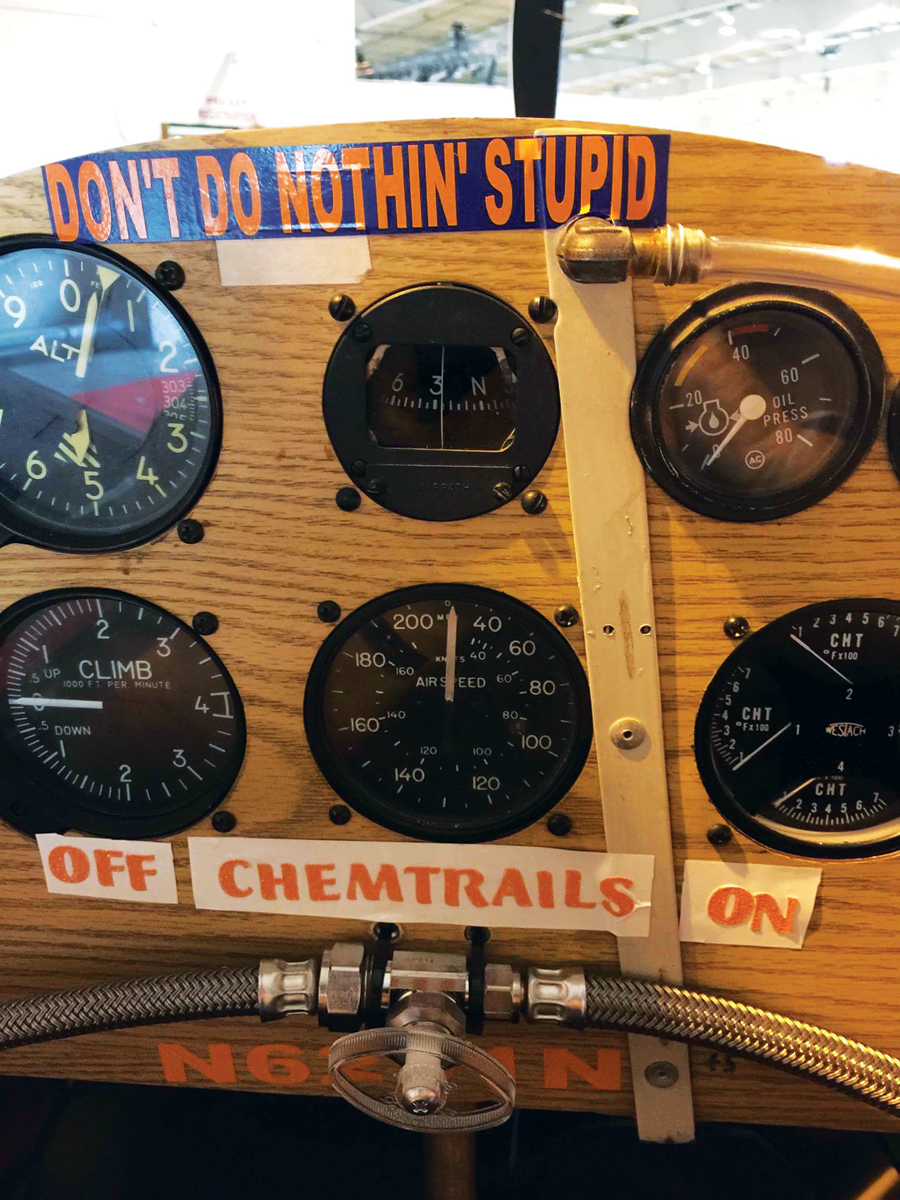
Chemtrails—isn’t that a secret? The placard is just for fun, but the reminder at the top of the panel is good for all pilots.
Well, that’s enough about me; let’s talk more about airplanes. A friend asked me if I wanted to race his Cassutt at the Reno Air Races. It’s pretty flattering stuff to reach that point in your career where people ask you things like that. How do you answer? You say, yes! And that is where the (almost) accident chain began.
I’ve always been spring loaded to that answer, and may just still have a bit too much of an invulnerability/invincibility thing going on for my own good. You want me to fly your airplane? Great! Let’s go! To jump ahead again, my current answer might be more like: Great! Let’s go take a good look at it!
But I digress. This was a great opportunity. Cassutts are an absolute giggle to fly, extremely sensitive and responsive. Astronaut and World Unlimited Warbird champion race pilot Hoot Gibson has ranked the Cassutt as one of his two absolute favorite airplanes to fly. I knew the owner/rebuilder of the airplane pretty well, and I know the quality of his work. It’s good. He’s told me everything he’s done with it both before and after a hangar fell on it. (You can read about that in KITPLANES, September 2014.) We’ve torn the plane down together and reassembled it. I’ve done everything you’d see and do in a normal condition inspection.
But these are Experimental aircraft. Proven design or not (and the Cassutt is a very well proven design that’s super strong), they are home built—but not by me, so I just didn’t know everything I really could have/should have known about it.
Hey, Paul Dye flew Last Lap Player last year and wrote about it. It’s been flying for quite a while. But hidden in there, behind the seatback and under the floorboard, something that just didn’t get looked at was a ticking time bomb! Of course I know that the PIC is the one responsible for determining if a plane is safe to fly, but just how much is a PIC expected to know about his airplane? If the answer is an unequivocal everything, then I might just be guilty of missing something.
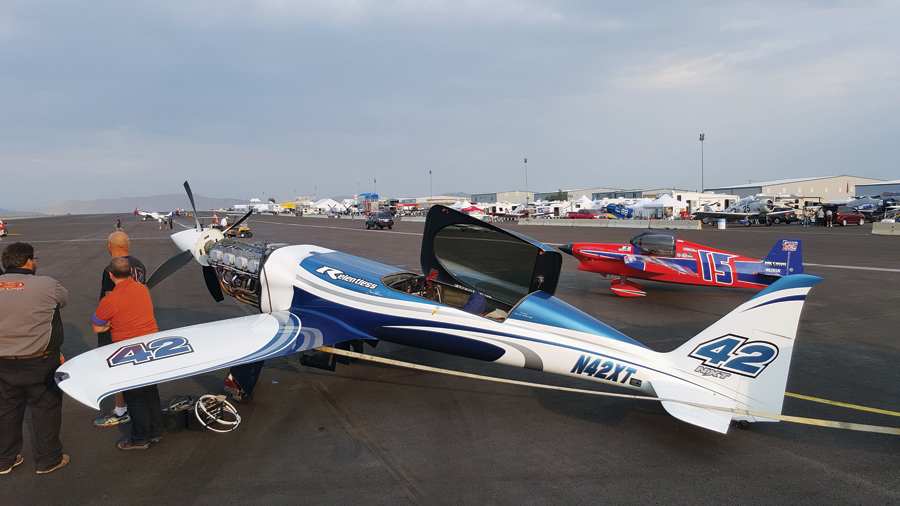
Reno race planes come in many sizes and levels of complexity, but they all require great attention to detail during construction and maintenance.
Off to the Races
My rookie season at Reno was great, and I was offered the opportunity to fly the same plane this year in the AirRace 1 championship series. The airplane owner saw a benefit to his company and generously allowed me to monopolize his plane for another five months or so. I bought a new (to me) race engine and got Craig Catto to build a super-duper race prop. (I wanna go fast.) The promoter paid to ship the planes over to Tunisia and back on a boat, I got time off from work, and the incredibly supportive wife and kids said, “Sure Dad, do what you gotta do.”
An aside here: Racing is awesome, air racing even more so. I’ve seen it suggested that every pilot ought to try air racing. I disagree. Air racing is very demanding mentally, some risk tolerance is required, and you really have to be able to do your own risk analysis every day, every minute, every second you fly. Your health and future are in your own hands—and no one else’s—the whole time. There is a wealth of knowledge available to help answer questions; a pylon racing seminar is offered (and required for rookie racers) every June at Stead Field to acquaint pilots new to racing with what is asked of you as a racer and pilot. But—you’re the one with your butt in the seat, and it requires a lot of attention to detail and an analytical nature to be able to deal appropriately with every little thing that pops up at 50 feet above the ground while you’re full throttle and trying for every little tenth of a knot while attempting to fly a smooth, predictable line. Then there are seven other racers around you depending on you to do just that. You need to stay in the smooth air and be able to deal with wake turbulence that can invert you in a second. Oh, and let’s not forget that your motor is spinning ungodly revs and making a lot of heat in ways Continental never intended. If you happen to be ADD like me, you may find that nothing brings you “into the moment” in quite the same way. The rest of the world just falls away. Zen much? Anyway, be on your game if you want to try this. OK, back to the story.
So, there I was, flailing to get the plane together in Monastir. I was a racer without a team initially; I didn’t know enough to ask for the help that was offered me by other racers. I thought they had enough to do getting their own planes ready.
I finally got the pointy end and wings and tail and stuff all oriented properly. Eventually, two awesome mechanics (they call them engineers in Europe) took me under their wings and things smoothed out considerably. I had a few fuel delivery issues, and those got sorted out, too. Note to self: Next time, bring spares for everything! There is no general aviation in Tunisia. Just getting aviation oil delivered to the airport was almost a complete show stopper.
With the plane ready to go, it was time for lots of practice laps. Several of us hot dog racer dudes made multiple formation low altitude flights along the beautiful Tunisian beaches to wake up the town. By now I knew the airplane and its handling quite well, and life was good!
Race Day
All was going great in Tunisia. I finally got the motor spun up nice and fast, and was settling down on course. And then…
Halfway through the Silver semifinal on Sunday, I was closing on two planes with much more experienced race pilots than I. They had better tactics, better positioning during passes; I had been getting schooled by these two all week on the course in practice and heats. Yeah, I’m talking about you, Justin and Phil…respect.
But I’m a pretty quick study (at least I think I am), and on this day, had a faster airplane than they did—thanks again to Catto Propellers. My fangs were out, I wanted to pass them so bad I could taste it. Fifty feet (maybe) above the deck, coming down the front stretch about 220 mph and seconds from passing, I realized that what I had been telling myself was turbulence from other racers for—I don’t know, half a lap maybe—was really something else.
My ailerons felt sloppy. What should have been millimeters of stick motion had become inches. When that awareness finally sank in, my race ended because things like that just don’t get better. So, I eased back on the stick (when you climb above 250 feet on the course, that’s recognized as a Mayday) and zoomed to about 1500 feet, using very minimal control motions. I knew something was wrong but didn’t know what. I turned downwind and then it got scary. The plane went clunk. I could feel it everywhere, and the stick moved aft from its normal position, about four inches toward my gut. That, in a Cassutt at that speed, usually yields about six G. But the nose did nothing at all, just stayed there.
At that moment, I immediately regretted my decision to save 20 pounds of gross weight by leaving my parachute in Utah. (Formula 1 planes do a racehorse start, so lighter is faster, and I weigh considerably more than minimum jockey weight.) Besides, how much good does a ‘chute do for you at 50 feet above the ground, right? Wrong! That would have been a very good time to rudder the plane over the Mediterranean, jump, and give it back to the insurance company. With no ‘chute, that option was off the table.
There is no pitch, rudder, or aileron trim in a Cassutt—pretty much nothing that doesn’t add speed, so all I had at that point was a well-balanced airplane with a good rudder and a running engine. I considered ditching, clear water looking like a better place to go than the deep mud of the salt ponds surrounding the airport on three sides. But either of these choices would likely end by giving both the plane and myself to the insurance companies. I didn’t like those options much, especially since taking my hand off the stick to pop the canopy in preparation for ditching—and destroying normal airflow over the tail in the process—did not seem likely to end well. Since the nose seemed to be pointing pretty much ahead instead of down, and the airplane turned OK with rudder only—hey, it was flying, and I’m a pilot. So I decided to try to land it.
Doing what I could to not point toward congested areas in case of further failure, I turned base. Going about 160 indicated, I allowed it to get pretty low, probably 250 feet or so shortly prior to the turn to final, (normal touchdown speed is about 80 mph indicated for a wheel landing, and being a racer, it’s pretty clean), while trying to absolutely freeze the stick where it was so things might not get worse.
I started squeezing a little power off, thinking that overshooting the runway might be bad, too. As I did that, it got worse. Another clunk and things started happening fast. The dang stick came right back to my crotch, and the nose dropped. Not a lot, but such that I figured about 5-8 seconds ’til impact into the salt ponds. My left hand moved the throttle forward a little, then a lot, and the airplane started accelerating—toward the water.
It was probably only a second or two before the nose responded, but it seemed a lot longer. Although the nose drop was subtle, the engine pitch change was quite obvious. The nose came back up, and I moderated the pitch with power—easy stuff now, then ruddered it around to final. Yeah, I overshot; sue me. As it settled down toward the runway, I figured I was still likely to crash. But with nothing to stop me in a hurry (no water, just concrete to slide on), I realized my survival chances had just increased exponentially. I think I started laughing, wondering what the spectators and crew thought of my display of landing prowess as the first touchdown (probably at 120 or 130) yielded a monster bounce. I corrected with power, took another huge bounce, power, bounce, power, until it finally slowed enough to stay on the ground.
Clearing the runway and taxiing in to my waiting crew, the chief hand signaled, WTF, mate? I didn’t know, but was relieved to be safely down.
Luckiest Day of My Life
My guardian angel was watching that day. My wife gently suggests I may want to give the poor guy a few days off; it’s been quite a year.
So what happened? You’ve probably already skipped ahead to the pics—I would. That area behind the seat, below the floorboard, hid a bad weld. You cannot see that without removing both the seat and floor. The sloppiness I felt on my last lap on the course was me working the little remaining metal on the joint almost to the point of failure. That failure came with the first clunk on downwind. Due to the weight of the combining arm resting on the torque tube, the ailerons may have still been able to respond a little—at least while on the ground with no air loading. The second clunk and resultant nose drop were probably due to—despite my best efforts to freeze the stick—a little more back pressure unconsciously applied when I nursed the power back a little. This caused the broken piece to slip farther along the torque tube. If I had stayed down on the course even one more turn, 20 seconds longer…well, I’m really glad I didn’t.
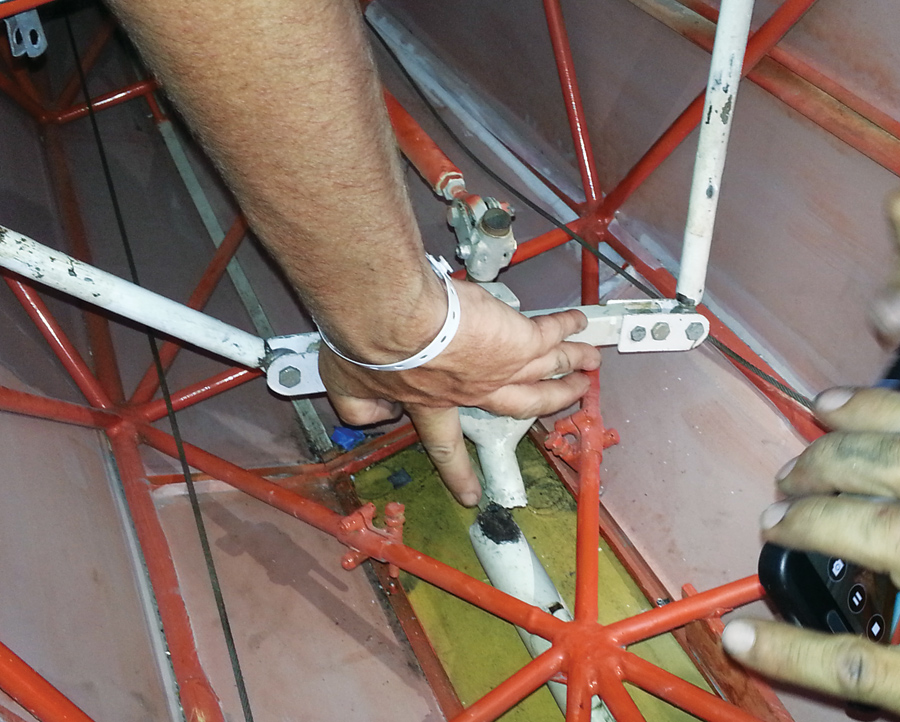
This broken weld effectively disconnected the control stick from both the ailerons and the elevator, leaving nothing but rudder and throttle to control the aircraft.
The torque tube combining aileron and elevator inputs had never been welded properly. A lot of metal, but no full-depth weld, it was a time bomb hidden with metal and paint. Over the 20-ish years since the control assembly had first been built, it had deteriorated and became weaker each time the ailerons were applied. I’ve been told that this has occurred before in the Cassutt, but I can’t tell you when or to whom. Afterwards, my crew chief Roy took the assembly back to his home to work on it, and was able to clean, NDI, and reweld the assembly with a nice stout gusset. It ain’t failing there again.
I had a German master welding instructor and aircraft builder look over every weld on the entire fuselage in Spain prior to assembling the plane there. It worked great in Spain during the second race of the series (no stress during that test flight) and in Reno, allowing me to finish a respectable 6th place overall in the three-continent series.
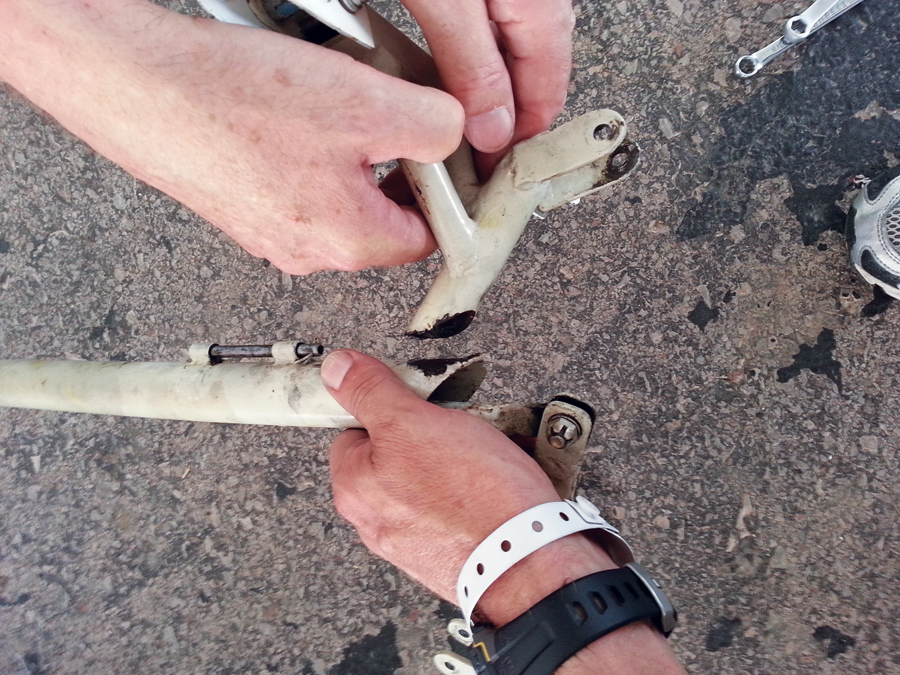
No homebuilder sets out to make a poor weld, but no one is perfect, as evidenced by the separated mixer assembly on Last Lap Player. This should be sobering to builders as well as non-builders who depend on other people’s work.
Here’s the thing: Even if I had seen it, I would not have known what was going on. Anyone who knows welding would’ve spotted the problem immediately, but not me. As a flyer, not a builder, there are a lot of skills I have not developed, builder vision (that’s not a thing, but you know what I mean) chief among them. Plus, as mentioned earlier, my expectations were that the airplane would be safe to fly, and that I would be the most dangerous component I was likely to encounter. So, I didn’t look hard enough.
The aircraft owner told me later that when he had rebuilt the plane after the hangar collapse, he went through it stem to stern, fixing a lot of issues along the way, but allowed time pressures, and likely, expectations to shortcut things before he got to taking the floorboard and seat back off to inspect the control assembly. He said he thought that it was likely one of the last items built, and that the builder would have polished his welding skills by the time he got there. Again, expectations. Reasonable, but in this case, faulty. I don’t blame him or his work at all. I’m so glad it failed where and when it did. Any of a zillion other places for it to go could have resulted in a much worse outcome.
What Did I Learn?
First, I did some things right. I’ve always heard to fly the airplane as far into the crash as possible. That’s good advice. I fully expected to die right then, but with a little (OK, a lot of) luck and an unwillingness to stop trying, things worked out for me. Ditching might have been a smarter option, but it’s difficult to argue with success.
Here’s another thing: I’m not going to go all holy roller on you, but I do pray, and my prayer before each race has been to ask God to watch over all the racers and to give me the wisdom to make good decisions. I believe that prayer was answered. Your mileage may vary.
At the very least, being able to recognize, when the pressure was on, that something was wrong (remember my saying problems don’t usually get better on their own?) and being able to respond properly, was key to the good outcome. I could’ve recognized it a few seconds earlier, but a few seconds later? Wow, I do not like that thought. Expectations can kill, or at least allow complacency to develop. These are Experimental homebuilt aircraft. There’s a lot of good things that go with that—you know that as well as I—but don’t trust blindly that just because an aircraft has been flying properly, it will continue to do so indefinitely.
Go deeper than you might need to when inspecting, at least once in a while. Before you fly it might be a good time for that. An extra set of educated (builder) eyes looking at things never hurts either. Take advantage of your local EAA bros. Take a welding class at community college. And lose weight if you need to, but dude, wear your ‘chute!
I’d love to fly your airplane, thanks for asking! Let’s go take a good look at it and tell me all about it, OK?


